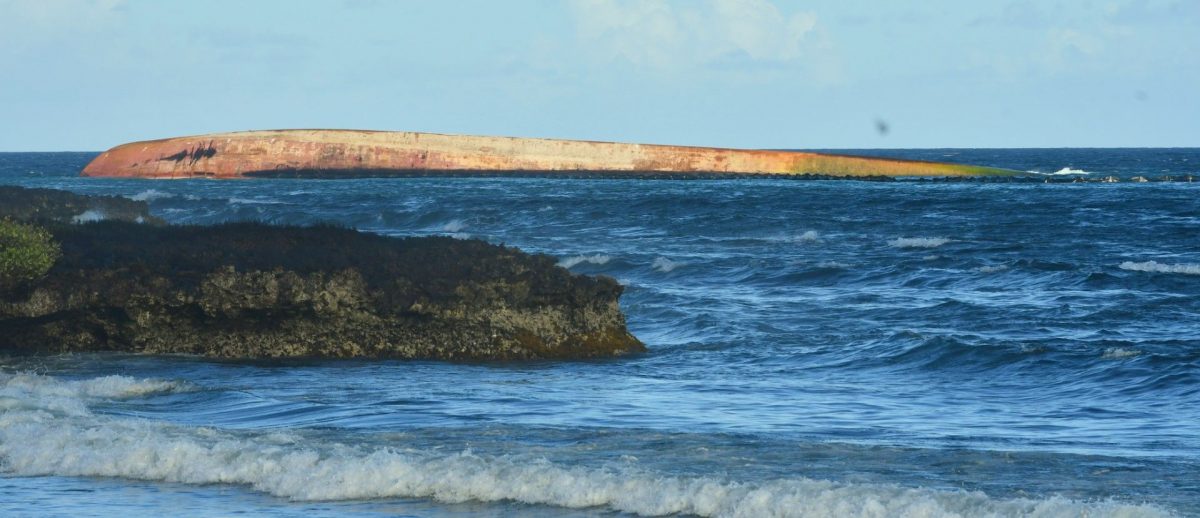(Trinidad Guardian) Workers have started operations to remove the overturned Gulfstream barge involved in the recent oil spill off the coast of Tobago.
At a media conference today, operations chief of the Incident Command System, Lieutenant Jason Hills, said surveys had been conducted to determine the depth around the vessel and aerial surveys carried out to identify any leaking fluid so that the work could start.
He said, “There is a boom that was being used to collect leaking fluid from the vessel. We need to have that removed so that T&T salvage can commence operations within that area.”
Today marks 24 days since the oil spill began, causing significant damage to the coastline and marine ecosystems and affecting the livelihoods of citizens, particularly fisherfolk.
At this stage, Hills said the clean-up process will transition from a mechanical-based collection system to a more manual approach. Efforts will also be made to collect the fluid at sea, with assistance from T&T Salvage’s water NOFI Current buster technology system—a high speed oil containment, decanting and recovery system.
The Tobago Emergency Operations Center and oil spill contingency plan have been fully activated to address the situation.
The majority of the contaminated areas are located along the southeastern sector of the Tobago coastline, from Scarborough to Sandy Point, specifically at Studley Park dump, Lambeau and Cove.
“As we look forward, we want to continue the clean-up throughout. We want to transition this process from the mechanical based on the quantity of material found to a more manual collection system. We want to start some collection of the fluid that we identified out at sea,” Hills said.
He said a team of over 300 individuals, including officials from the Tobago Emergency Management Agency (TEMA), the Tobago House of Assembly (THA), and the Office of Disaster Preparedness and Management (ODPM), as well as volunteers, are involved in the clean-up efforts.
According to the data provided, Hills said Heritage Petroleum collected 20,000 barrels of liquid waste and 1,500 cubic yards of solid waste, while Tiger Tanks, a supplier of frac tanks, collected 1,300 barrels of solid waste and over 2,016 cubic metres of solid waste.
The collected waste is being stored in frac tanks located in Lambeau and the Cove, with additional material being taken to Studley Park for subsequent disposal.
Hills also said a comprehensive waste management plan will be developed to ensure proper disposal of the collected waste.
Chief Secretary Farley Augustine said as salvage operations progress and the clean-up efforts continue, it will be vital for all stakeholders to work together to cushion the impact of the oil spill and restore the affected ecosystems.
Augustine said the support of those on the island, government agencies, and international partners has been vital in managing the disaster.
“So we are very careful to use international best practices to ensure that we don’t have any of the matter, meaning in terms of what does the science say is the impact to our health.
“I have not had the privilege of any extensive scientific research that shows that the presence of the matter itself, just being close to it itself, causes any serious or adverse health risk but absolutely we continue to operate in the abundance of caution.”






